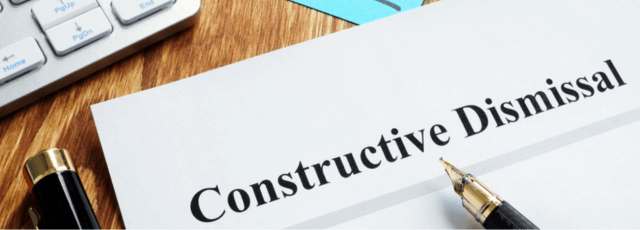Constructive dismissal policy
A constructive dismissal policy can help you with maintaining a positive work environment, preventing unfair treatment, and managing significant changes in employment terms. It provides a clear process for addressing issues, protecting both the organization and its employees from potential legal implications.
What is a constructive dismissal policy?
Constructive dismissal, also known as constructive discharge or constructive termination, occurs when an employee resigns from their job due to a significant and negative change in their working conditions.
A constructive dismissal policy should include:
- The definition of constructive dismissal.
- The responsibilities of the employer and employees to prevent such situations.
- The process for employees to report issues that could lead to constructive dismissal.
- The steps the organization will take to investigate and address such reports.
- The potential consequences for individuals or actions that lead to constructive dismissal.
This Constructive Dismissal Policy template is ready to be tailored to your company’s needs and should be considered a starting point for setting up your employment policies.

Policy brief & purpose
Constructive dismissal policy provides a framework for understanding and addressing situations where an employee resigns due to a significant change in their work environment or employment terms. This policy provides practical advice to avoid issues that might arise from situations that could lead to constructive dismissal.
Scope
This policy applies to all the employees.
Policy elements
Understanding constructive dismissal
Constructive dismissal occurs when an employee resigns because their employer’s behavior has become so intolerable or made life so difficult that the employee has no choice but to resign. For instance, if we unilaterally change the terms of your employment contract (e.g., significantly reducing your salary, changing your working hours, or changing your job description without your agreement), this could potentially be seen as constructive dismissal.
Avoiding constructive dismissal
We are committed to maintaining a positive work environment and treating all employees fairly. Therefore, we will:
- Ensure that changes to employment contracts are mutually agreed upon.
- Maintain open lines of communication with all employees to address concerns promptly.
- Provide support and resources to managers and supervisors to handle employee issues appropriately.
- Regularly review and update our policies and procedures to ensure they are fair and transparent.
Reporting and addressing constructive dismissal claims
If you believe you are experiencing circumstances that could lead to constructive dismissal, we encourage you to:
- Document all incidents that contribute to your work environment becoming intolerable.
- Report these incidents to your supervisor or HR department as soon as possible.
- Seek advice and support from the HR department.
We will investigate all reports thoroughly and take necessary actions to resolve the situation.
This may include mediation, changes to work practices, or disciplinary action against those responsible.
Disciplinary consequences
If a manager or supervisor is found to have created an environment that leads to constructive dismissal, they will face disciplinary action, up to and including termination. Examples of such behavior include, but are not limited to:
- Unilaterally changing the terms of an employee’s contract without their agreement.
- Creating a hostile work environment.
- Failing to address reported issues that contribute to an intolerable work environment.
Disclaimer
This policy template is meant to provide general guidelines and should be used as a reference. It may not take into account all relevant local, state, or federal laws and is not a legal document.
Neither the author nor [Your Company Name] will assume any legal liability that may arise from the use of this policy.